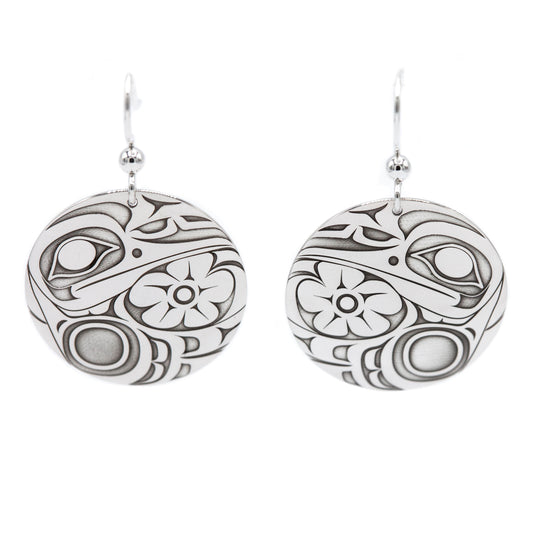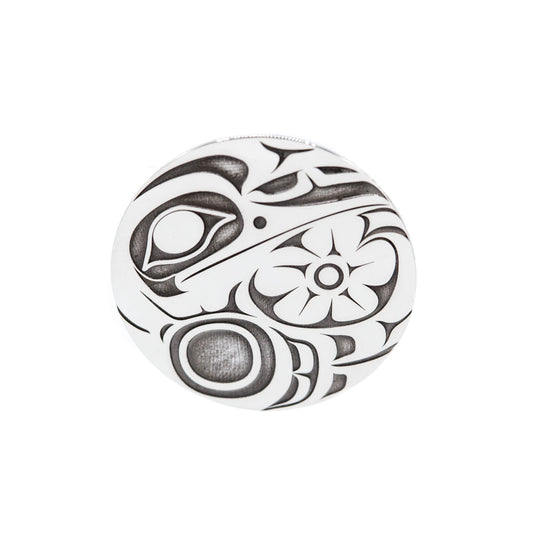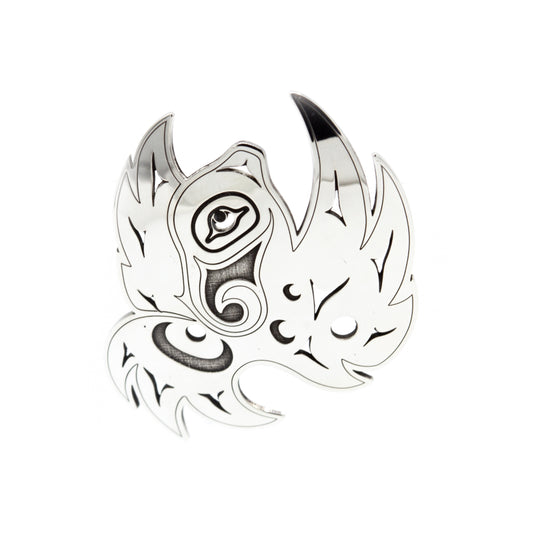Collection: The Hummingbird Symbol
Indigenous Significance of the Hummingbird Symbol
Valued for their beauty and charm, the Hummingbird is often said to bring good luck to those who spot them. They are not a common family symbol, however, the Hummingbird can be frequently spotted in Northwest Coast jewellery. Among Haida people of the Eagle clan, Hummingbird is a family crest, but it is not traditionally a major motif in the art. Its popularity today indicates that it has become a very important symbol of love and beauty.
Hummingbirds are known to nest in the unruly hair of Dzunuk’wa, the Wild Woman of the Woods, and fly around her as she walks through the forest. She is the guardian of the forest creatures and the protector of the Hummingbird (Shearar).
Haida stories tell of high-ranking women arriving at feasts with live hummingbirds tied to their hair to announce their beauty, wealth, prestige and close communion with the spirit of the bird (Shearar). The tiny birds are considered rainbows, or animate prisms, busily transforming sunlight into weightless jewels. It is for this reason, among many, that the beautiful creatures are so often seen in jewellery.
Artistic Characteristics of the Hummingbird
In art, the Hummingbird is identified by a long, narrow beak; prominent eyes; a small head, sometimes with a small curly plume; short wings; and the presence of flowers (Shearar). Hummingbird’s beak can be distinguished from Raven’s because of its graceful length and distinct point.








